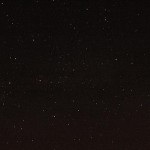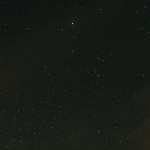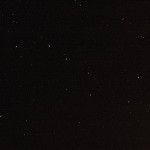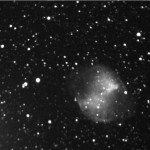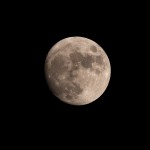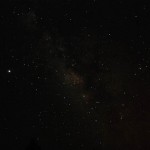Often in astronomy the question of visual astronomy (Mark One Eyeball) vs electronic imaging (CCDs) crops up. Being very firmly in the first camp I get a tad annoyed when people assume that imaging is the only way to go about getting lasting souvenirs of a nights observing. All too often I encounter beginners who are itching to go straight past visual observing and dive right into imaging and, often, they know nothing about the sky and how to find their way around it. They don’t want to know about the joy that is visual deep sky or planetary observing. I may be biased but I think that they’re missing the best bits!The imaging side of things does tend to overshadow the visual side and most of the articles in magazines tend to be aimed at the imaging crowd. This leads to questions on forums such as ‘Is visual observing dead?’, ‘Will people still be doing visual observing in 5/10/20/30 years time?’ and ‘Will eyepieces still be available in the future?’. The answers to those questions are, in order, an emphatic ‘No!’, ‘Of course they will!’ and ‘Yes!’.
Visual has been declared dead, dying or downright obsolete many times over the years but it is still going strong – if it was moribund then the large dob makers and people such as Televue would be out of business. Visual observing didn’t die when astrophotography came along, it didn’t die when the CCD revolution happened in the late 80s/early 90s and it won’t die now that the current craze is video-assisted observing, where a webcam or similar device is plugged into the telescope focuser and the results shown on a tv screen or monitor. I know of people who sketch using this method and it’s no less valid than any other method but, to me, I may as well go onto a remote telescope website and sketch what I see from there. Judging by the posts on Cloudy Nights and other forums, quite a few people feel the same way.
Having said that, I can see the usefulness of webcam observing if you’re stuck under light polluted skies and, if I was in the position of being stuck in a white zone as opposed to a green zone, I’d do the same. So, I am not writing it off entirely but, as things currently stand, it is not for me. I can also see the attraction for outreach events and for the visually-impaired – in these cases, video-assisted observing is a brilliant alternative.
Visual has been declared dead, dying or downright obsolete many times over the years but it is still going strong – if it was moribund then the large dob makers and people such as Televue would be out of business. Visual observing didn’t die when astrophotography came along, it didn’t die when the CCD revolution happened in the late 80s/early 90s and it won’t die now that the current craze is video-assisted observing, where a webcam or similar device is plugged into the telescope focuser and the results shown on a tv screen or monitor. I know of people who sketch using this method and it’s no less valid than any other method but, to me, I may as well go onto a remote telescope website and sketch what I see from there. Judging by the posts on Cloudy Nights and other forums, quite a few people feel the same way.
Having said that, I can see the usefulness of webcam observing if you’re stuck under light polluted skies and, if I was in the position of being stuck in a white zone as opposed to a green zone, I’d do the same. So, I am not writing it off entirely but, as things currently stand, it is not for me. I can also see the attraction for outreach events and for the visually-impaired – in these cases, video-assisted observing is a brilliant alternative.
As for imaging itself, I guess that most of the reason for its popularity is because astrophotos are eye-catching and pretty and imagers garner a lot of praise – and rightfully so because imaging is not easy – for their work in getting the pictures. It’s also been mentioned elsewhere that imagers are quicker and more keen to blow their own trumpets than visual observers and I believe there’s a lot of truth in this. I love a good astrophoto as much as the next person, indeed I have astrophotos on my walls at home, but while I am grateful for the dedicated souls practicising this art I would like to discredit the notion there seems to be that it is the only way to practise amateur astronomy.
While the magazines are full of ads for wonderful electronic gizmoes and feature lovely photos of colourful swirling nebulae and mysterious galaxies and legions of ‘how to’ articles on imaging, there isn’t a huge amount aimed at the purely visual observer, bar the usual “Such and such is in the sky and you can see it with the unaided eye/binoculars/scope”. The UK’s Astronomy Now and BBC Sky At Night magazines now feature regular sketching articles by Jeremy Perez and Carol Lakomiak – and this is excellent to inspire others to take up astronomical sketching, although AN is better in this regard because Jeremy gets a couple of pages while Carol, in S@N, gets one page, but this is better than nothing as S@N resisted featuring sketching for a long while (I wrote to the editor a few years ago, when the magazine first came out, about featuring sketches and got a dismissive reply, I stopped buying the magazine for a long while because of this).
Don’t get me wrong, I am not against imaging or video astronomy, far from it, there’s room for all of us – and for those living in horribly light-polluted areas, or with impaired eyesight, imaging rather than visual observing does make sense – but it does annoy me that people think that imaging or video astronomy is the *only* way to go. Even I’ve had a go at imaging – I have done some simple astrophotography with my DSLR and a wide angle lens (which I enjoy doing and one or two of the results have ended up on my blog in the past – I want to do some more, once I have replaced my crappy wide angle with a better one) and I have even dabbled in CCD imaging, with my local astronomy society’s CCD camera and 12″ LX200 Meade SCT. However, CCD imaging annoyed the hell out of me that night because everything that could go wrong did go wrong: the scope’s electronic focus wouldn’t work, the drive correction didn’t work properly so the stars looked like American footballs or rugby balls, the images refused to download, the results were crap and I felt totally divorced from what I was actually ‘observing’. I could have visually observed at least 10 DSOs in the time it took me to acquire the image of just one! No, I’ll leave imaging to the experts, people like Robert Reeves, Richie Jarvis and Iain Melville who are brilliant imagers (check out Robert and Richie’s work: Robert, Richie).
There’s something very special about looking through an eyepiece, a feeling you don’t get looking at a screen. The thrill of seeing that faint galaxy group for the first time, an impossibly-distant quasar popping into view during moments of good seeing, seeing a comet collide with a planet (Jupiter in 1994 and 2009), seeing a faint nebula that most people haven’t seen…as John Dobson once said about large scopes, “[Dobsonian] telescopes are designed to entertain soft, warm eyes, rather than photographic plates, and to accomodate large enough apertures to allow the stupid rod cells (which stay awake at night) to see the galaxies without the intervention of photography.”
My friend Thomas Watson sums it up better than I can. Tom says: “I need to see these things for myself. . . . All the photos, sketches, and images cannot replace the feeling of seeing for myself shadows cast by lunar mountains, or the diamond-dust glitter of a globular cluster. The depth and beauty of the universe gain a new level of meaning when you take the time to see things for yourself. For me, that’s reason enough to spend time at the eyepiece.” This isn’t a dig at imaging, it just sums up very well why some a lot of us – including some imagers! – still choose to look through an eyepiece, rather than at (or as well as) a screen.
People tend to think of astronomy as an expensive hobby but it isn’t (it’s as cheap or as expensive as you want to make it) and, once you have a scope, you need nothing else except pencil and paper. Give visual observing and sketching a go, it is not hard and a lot easier – and more fun – that you think. Don’t let the imagers have all the fun and grab all the plaudits!
Here are a few of my own astrophoto efforts (click on each one for a larger version):
